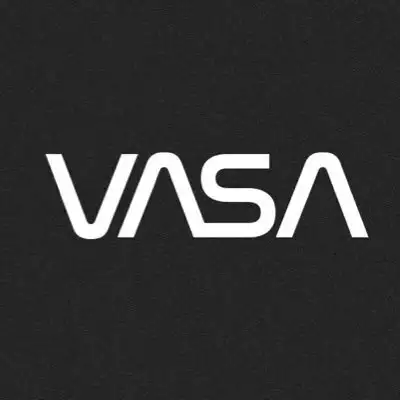The Inside Scoop w/ Kirsten Sutaria of Doozy Pots
00:41 – Growing up in the kitchen
Kirsten has been making food for as long as she can remember. Both her parents worked in the food industry, which initially sparked her interest in food.
“I grew up in, I guess, what you would call a foodie family before foodies was a thing. My parents owned restaurants when I was little. So I started in the kitchen, probably around three years old, peeling carrots with my parents standing on a milk crate. So growing up, I grew up around food. My mom worked in the wine industry. My dad worked in the food industry, both as a chef and doing corporate product development for brands like Nestle and Sysco. So I really got exposed to food from a very young age. And then, I realized that you could work with food and not have to work in the restaurant business. I love the restaurant business, but I really saw that it doesn't necessarily lead to a great work-life balance. And when I realized that you could study food science in university and go into product development roles, that really caught my eye. So right out of high school, went to Cornell University to study food science with a focus in operations and management. So a balance of business, marketing, and food science.”
05:08 – How Doozy Pots got its name
Kirsten was inspired to name her company Doozy Pots after the phrase her grandmother would use to call someone crazy.
“Doozy Pots comes from my childhood nickname that my grandma on Long Island called us. And she'd be like, we were acting crazy, she'd say, ‘Don't be such a doozy pot.’ And doozy pot comes from the Italian saying, ‘tu sei pazza,’ which means ‘thou art crazy,’ or ‘you're crazy.’ And it's a very regional New York, Long Island name. It's really funny because I'll see people who don't know anything about the brand, and then they see the t-shirt and they're like, ‘Oh my God, your shirt says doozy pots. My cousins call each other doozy pots in Long Island.’ And it's a very regional thing. But we'd come up with a few other names. And the one we were going to go with was Melloh, M-E-L-L-O-H. And we were going through some trademark work and for several reasons figured out that it wasn't the best option for us. And you have this idea in your head and you're ready to go, and then you hit a roadblock, and you're like, ‘Oh great. Now we need to come up with a name.’ Coming up with a name is quite a big process. It was late at night. I was in the kitchen, and I do embody being a doozy pot. I'm a little bit all over the place. I'm a little bit of a klutz, and I spilled something in the kitchen. I was like, ‘Oh, I'm such a doozy pot.’ And then I was like, ‘Wait, should we call this Doozy Pot?’ And here we are three years into Doozy Pots.”
08:17 – The science of ice cream
Kirsten’s job at Ben & Jerry’s developed her interest in food science. She helped create Ben & Jerry’s Greek yogurt ice cream as well as their plant-based mix.
“When I got to Ben & Jerry's, one of my tasks was to create a new base mix for Greek frozen yogurt. And there was a super experienced team there, great team of really lovely guys. And they were like, ‘Yeah, I've never really made a mix before because Ben & Jerry's is classic and we know what our mix is.’ And so I was like, ‘Hey, I'll be the mix champion.’ And I really dove into what is the science of ice cream? And ice cream is one of the most complex foods we eat because it's a three-phase solution. It has solid, liquid, and gas in it, and it's an emulsion, and I'm not going to go into the deep, deep science of it, but it's just a really interesting food. And there's so much research been done on ice cream, and there are some rules that people hold to, and you fit within those guardrails. But when you move into plant-based, a lot of those things fly out the window, which I learned in the year that I spent just trying to develop a plant-based mix.”
09:21 – Finding the secret ingredient
While doing ingredient research, Kirsten stumbled across an article about hemp, and the idea for a new kind of plant-based ice cream was born.
“One of my favorite parts of my job is doing ingredient research and trend research. And I was reading a scientific journal article about the nutritional benefits of hemp seeds and hemp hearts. And I was like, ‘Whoa, hemp is amazing. What a cool ingredient, and it's so sustainable. It's so nutritious. It's really functional. Why isn't anyone using this?’ This was 2018. And I realized no one was really using it because it was illegal to grow in the U.S. So it's finally, as of early 2019, it's legal to grow, but there was no innovation and no creative work done with hemp because it was blacklisted and bundled together with marijuana. And I got this bee in my bonnet. I was like, ‘I think hemp would make an amazing base for plant-based ice cream, much better than nuts and coconut.’”
12:26 – Advertising is a challenge
Because hemp is closely related to marijuana, marketing can be a challenge. People need to be better educated on the differences between hemp, CBD, and marijuana.
“We launched in 2019, which was peak CBD. So there was a loophole that people realized that if you're a CBD brand you could call it full-spectrum hemp oil and not really talk about the CBD. So then that actually created more confusion for the food companies that didn't use CBD. So there's definitely education that needs to be done. It varies by region. We also, our initial packaging on the lid said in big, bold text, ‘Made with organic hemp,’ which we found to be to our detriment because it caught people's eyes first. And they were like, ‘Oh, hemp. I don't know what that is. I don't want that.’ So we pared that back to say, ‘We're a plant-based ice cream that uses a blend of organic oat and hemp milk,’ and it's more secondary, tertiary communication. And our other big struggle is Meta still will not allow you to do paid advertising and use the word hemp in any advertising or any photos. So we've had our account shut down. We get dinged. So we've had to get really creative on actually not talking about our hero ingredient, which sucks.”
14:28 – Level the playing field
There are a lot of brands that want to be able to market hemp products freely, but the playing field must be leveled first.
“There's so much opportunity in hemp at every single place in the supply chain, from the farmer that's putting the seed in the ground through to intermediary ingredient companies, through to finish goods, food products. And there's so many people doing great stuff, and it's really just restrictive to not be able to talk about that. And how do you really build an industry if people don't even still view it as something that's just a food ingredient? A hemp seed and a sesame seed and a sunflower seed should not be different from an advertising perspective. There's a bunch of brands that are just really trying to push to say, ‘Hey, if you want to build a domestic hemp industry, you really need to level the playing field for everybody.’”
19:01 – Put in the work to be eco-friendly
If you want to be as eco-friendly as possible, you have to look at every touchpoint on the food supply chain.
“We say we want to be a brand that does better for the planet and is kinder to the people that grow these ingredients and making sure people are getting paid fair wages. There's so many touchpoints in a food supply chain, and sometimes you see brands that are out there. Maybe they're organic, but that's as far as they go, but that doesn't necessarily look at the whole true cost of getting that ingredient into the product and that product to market. What suppliers do you work with? What co-packers do you work with? We've run the gamut to look at co-packers and been to one that was literally burning their trash in a field behind the factory. We work with one now that is much more eco-friendly and eco-minded, and that's a fit for our business. You have to look at everything, and I see some of these new more eco-friendly brands come to market so quickly. And you wonder what are they actually doing, and are they truly walking that walk? And I think if you pull the curtain back, the answer would be no, which is unfortunate.”
21:04 – Source ingredients ethically
You can ethically source non-local ingredients, you just have to be careful who you’re getting them from.
“As with Ashwagandha, is there a domestic source for Ashwagandha? No, but if you need to go to one of these regions, how do you find the best possible option? And I don't think there's anything wrong with sourcing non-domestic ingredients, as long as you are very, very cognizant of what that whole supply chain looks like. If you're going to use coconut water, chances are it's going to come from Southeast Asia. If you need to, go out there and visit the farm, see what they're doing, make those connections, build those relationships. And, oftentimes, people are doing the right thing, but it takes probably triple the amount of work and seeing brands that are putting in the work. And I think we're seeing more and more, seeing those brands do that are the future. People, especially young consumers, want to know every single thing about your brand.”
25:14 – Find good role models
If you want to be an eco-friendly company, look to brands that are already doing it well. Dr. Bronner’s is a great example of a truly sustainable company.
“A great place to start is actually the UN sustainable development goals. That's one. And then also looking at brands that you love. So if you are, for us, we like to walk the walk and try to buy as many sustainable brands as possible and look at different certifications. Is it upcycled certified? Is it organic? Is it organic regenerative certification? Go to those certifying boards, they'll often show you what brands they work with and then you can do some research into those brands. What are they doing? I think a great example of a brand that has really owned sustainability is Dr. Bronner's soap. And they just launched a chocolate company. Which, you think, soap, chocolate — how are those two platforms connected? But they are very well-connected given that the area where they were sourcing some of their oils for their soaps also was a cacao-growing region. And they figured, how can we help them grow organic regenerative cacao in conjunction with the oil plants that they're growing for us for our soap? And just for us, it's always looking at brands who are best in class, brands like Alter Eco with their chocolate and then really diving into their sustainability story. Who are they working with? What do their supply chains look like? That's the way I do it.”
Creators and Guests


